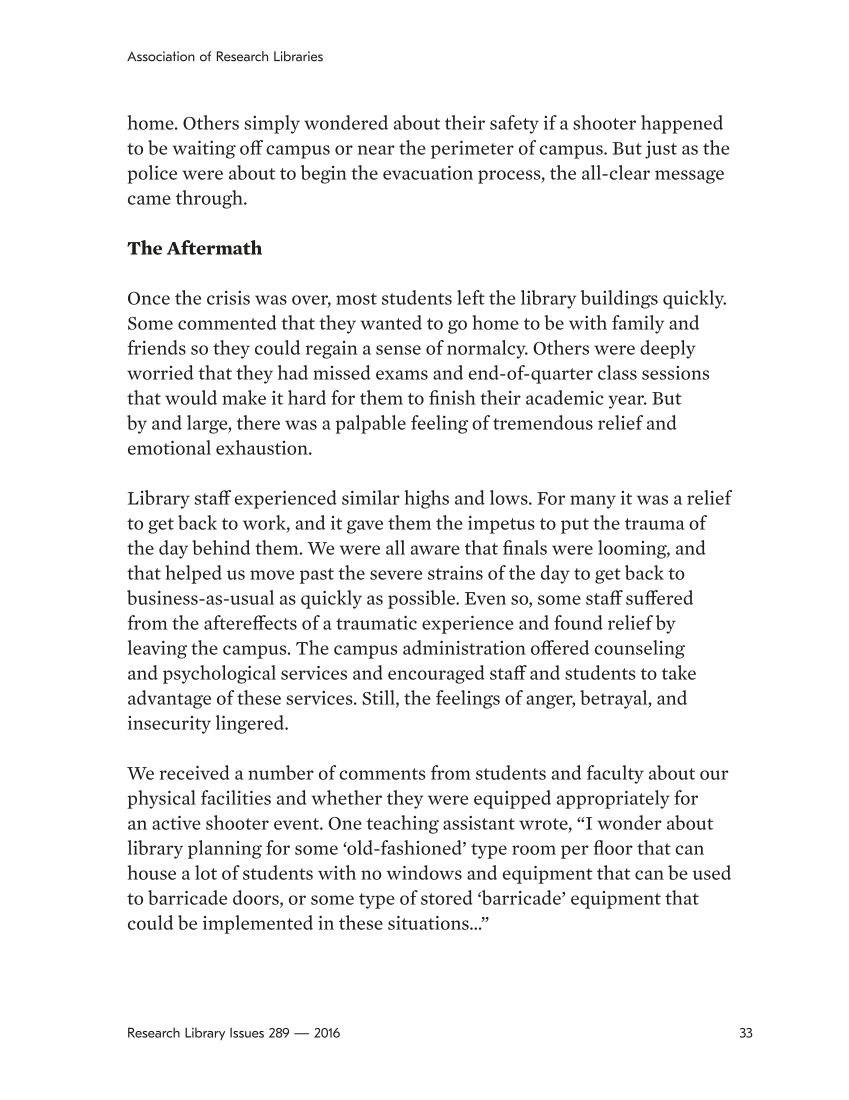33 Association of Research Libraries Research Library Issues 289 — 2016 home. Others simply wondered about their safety if a shooter happened to be waiting off campus or near the perimeter of campus. But just as the police were about to begin the evacuation process, the all-clear message came through. The Aftermath Once the crisis was over, most students left the library buildings quickly. Some commented that they wanted to go home to be with family and friends so they could regain a sense of normalcy. Others were deeply worried that they had missed exams and end-of-quarter class sessions that would make it hard for them to finish their academic year. But by and large, there was a palpable feeling of tremendous relief and emotional exhaustion. Library staff experienced similar highs and lows. For many it was a relief to get back to work, and it gave them the impetus to put the trauma of the day behind them. We were all aware that finals were looming, and that helped us move past the severe strains of the day to get back to business-as-usual as quickly as possible. Even so, some staff suffered from the aftereffects of a traumatic experience and found relief by leaving the campus. The campus administration offered counseling and psychological services and encouraged staff and students to take advantage of these services. Still, the feelings of anger, betrayal, and insecurity lingered. We received a number of comments from students and faculty about our physical facilities and whether they were equipped appropriately for an active shooter event. One teaching assistant wrote, “I wonder about library planning for some ‘old-fashioned’ type room per floor that can house a lot of students with no windows and equipment that can be used to barricade doors, or some type of stored ‘barricade’ equipment that could be implemented in these situations…”






































